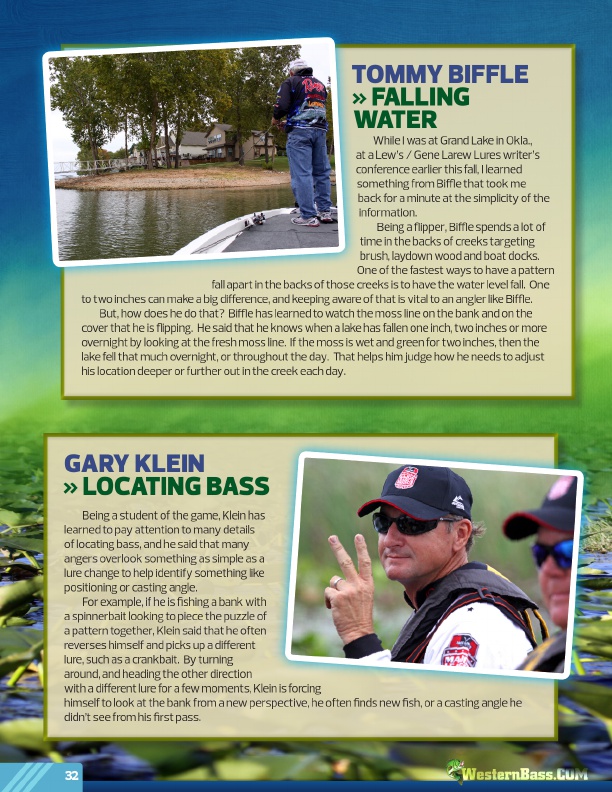
While i was at Grand lake in okla., at a lew’s / Gene larew lures writer’s conference earlier this fall, i learned something from Biffle that took me back for a minute at the simplicity of the information. Being a flipper, Biffle spends a lot of time in the backs of creeks targeting brush, laydown wood and boat docks. one of the fastest ways to have a pattern fall apart in the backs of those creeks is to have the water level fall. one to two inches can make a big difference, and keeping aware of that is vital to an angler like Biffle. But, how does he do that? Biffle has learned to watch the moss line on the bank and on the cover that he is flipping. He said that he knows when a lake has fallen one inch, two inches or more overnight by looking at the fresh moss line. if the moss is wet and green for two inches, then the lake fell that much overnight, or throughout the day. That helps him judge how he needs to adjust his location deeper or further out in the creek each day.
tommy bIffle » fallInG Water
Gary KleIn » locatInG bass
Being a student of the game, Klein has learned to pay attention to many details of locating bass, and he said that many angers overlook something as simple as a lure change to help identify something like positioning or casting angle. For example, if he is fishing a bank with a spinnerbait looking to piece the puzzle of a pattern together, Klein said that he often reverses himself and picks up a different lure, such as a crankbait. By turning around, and heading the other direction with a different lure for a few moments, Klein is forcing himself to look at the bank from a new perspective, he often finds new fish, or a casting angle he didn’t see from his first pass.
32